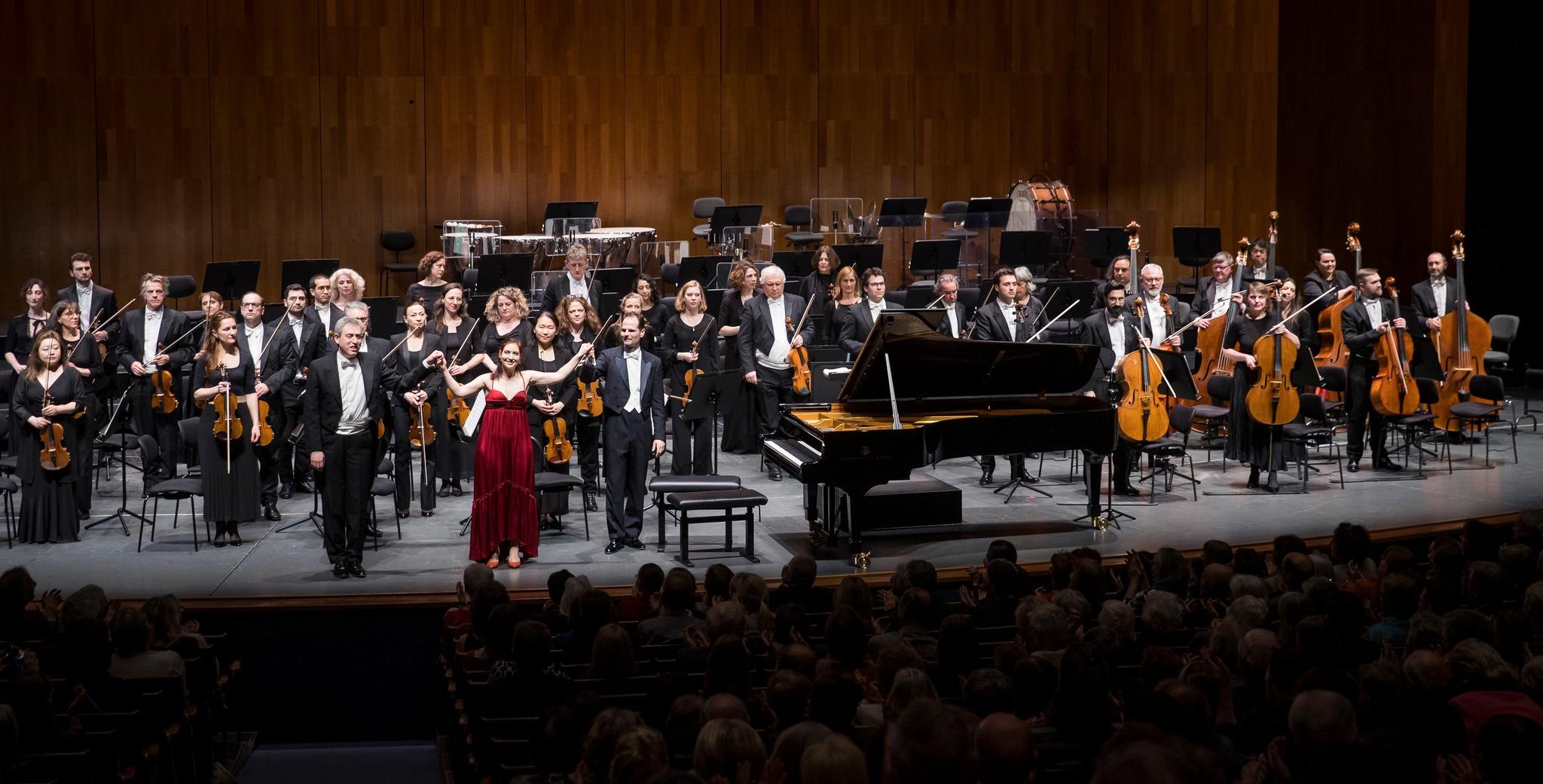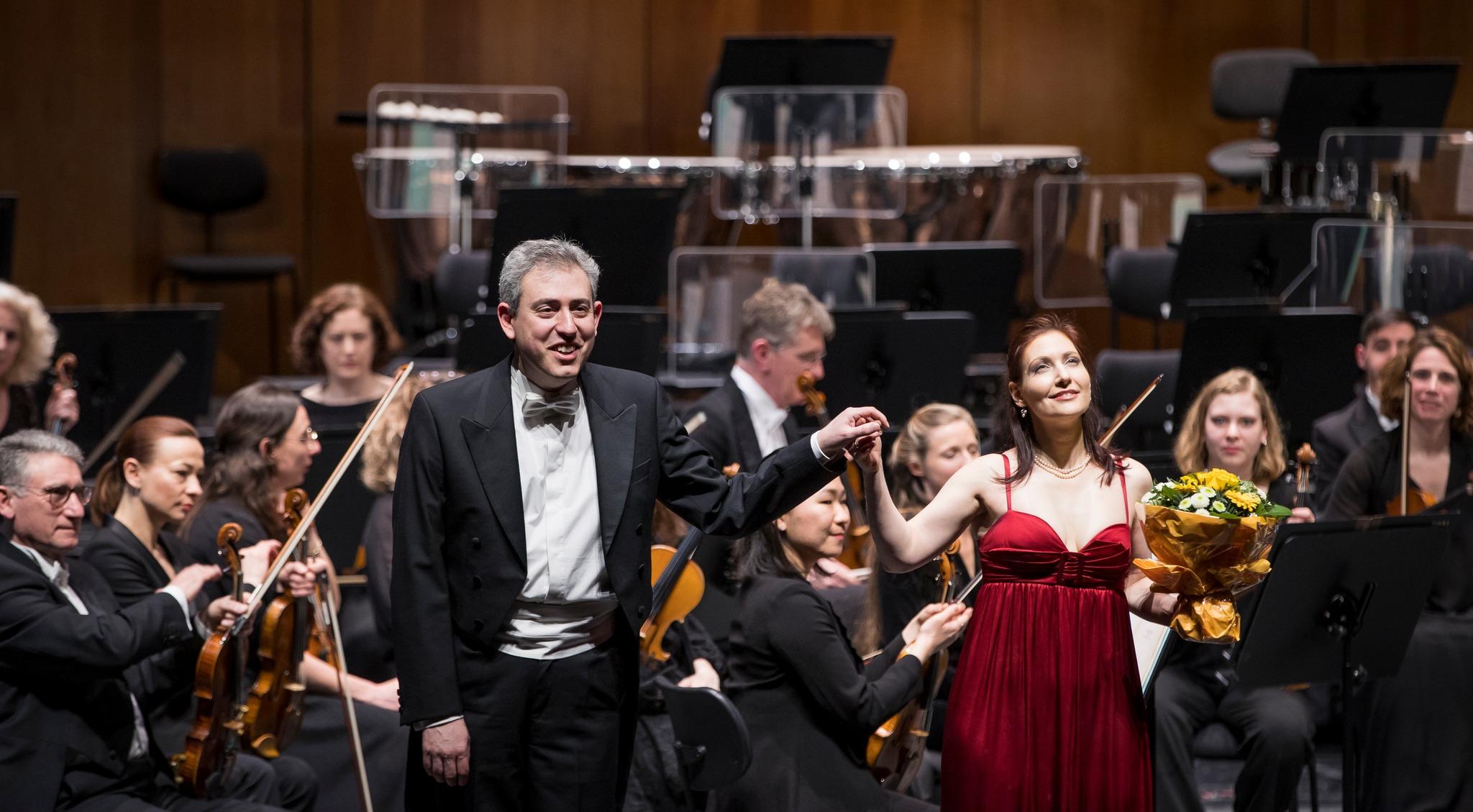
High praise in the Austrian press for the Belgian National Orchestra

As if it were a piece of his own
There are several concertos for two pianos. However, apart from Carl Czerny or Leopold Koželuh, the offer for piano four hands is rather meagre. The Silver-Garburg piano duo has therefore commissioned an arrangement of a Brahms concerto.
By Horst Reischenböck
Under the baton of Constantin Trinks, the Belgian National Orchestra and the piano duo Silver-Garburg thrilled the audience with Brahms' Piano Quartet No. 1 in G minor in an arrangement by Richard Dünser for piano four hands and string orchestra. To remedy the lack of literature for piano four hands, Sivan Silver and Gil Garburg, who both teach in Graz, asked the Vorarlberg composer Richard Dünser for help. The latter volunteered to arrange Johannes Brahms' Piano Quartet op. 25 for them. Dünser, whose violin concerto was commissioned by the Bregenz Festival and recorded by Benjamin Schmid, had already reconstructed a Symphony in E major from individual movements by Franz Schubert and arranged works by Domenico Scarlatti and Claude Debussy as well as the Deutsche Volkslieder, also by Johannes Brahms.
Brahms' Quartet Op. 25 already existed in an orchestrated form by Arnold Schönberg. Dünser was not satisfied with this version, however, and used Brahms' own version for piano four hands for his "re-composition". He placed a string orchestra as a concert partner and transposed the original key from G minor to C minor. In this way, he created a subtle-sounding chamber music version of the work, as if it were a piece of his own, with a slightly grandiose disposition, which at times seems to lack woodwind sounds to add extra bursts of colour.
Silver-Garburg, who presented the work in this form for the first time in Salzburg, first entered as soloists and slightly lightened the elegiac basic content of the opening Allegro during the Intermezzo. In the Andante, they reversed their roles for the time being to accompany the rich-sounding strings. The final Rondo, with its rousing gypsy touches, finally gave the two pianists the opportunity to show off their virtuoso pianistic fire. As an encore, they played Brahms' famous Waltz in A-flat Major, Op. 39 No. 15.

Next, Constantin Trinks and the brilliantly arranged Belgian National Orchestra, formerly conducted by Michael Gielen and Walter Weller, devoted themselves to Sir Edward Elgar's diversified set of Enigma Variations op. 36. Like Brahms, Elgar was a master of variation and the Enigma Variations are his masterpiece in this technique. Yet they do not sound technical at all, but sometimes pleasant, sometimes poetic, often powerfully roaring. The individual dedications to contemporaries are, with the exception of one, deciphered, but their underlying characters are difficult to understand. From a purely musical point of view, the variations offer a multitude of instrumental subtleties to be exploited, to which the various musical sections have devoted themselves with commitment. The solos of the clarinettist and the first cello, but also of the horn quartet, are especially remarkable. Particularly impressive is the transcendent, floating atmosphere of the Nimrod variation, in which time literally stands still. It is a pity that the guests did not offer an encore afterwards for the applause.
The original article (in German) is to be found by clicking here.
Photos © KV / Leopold


